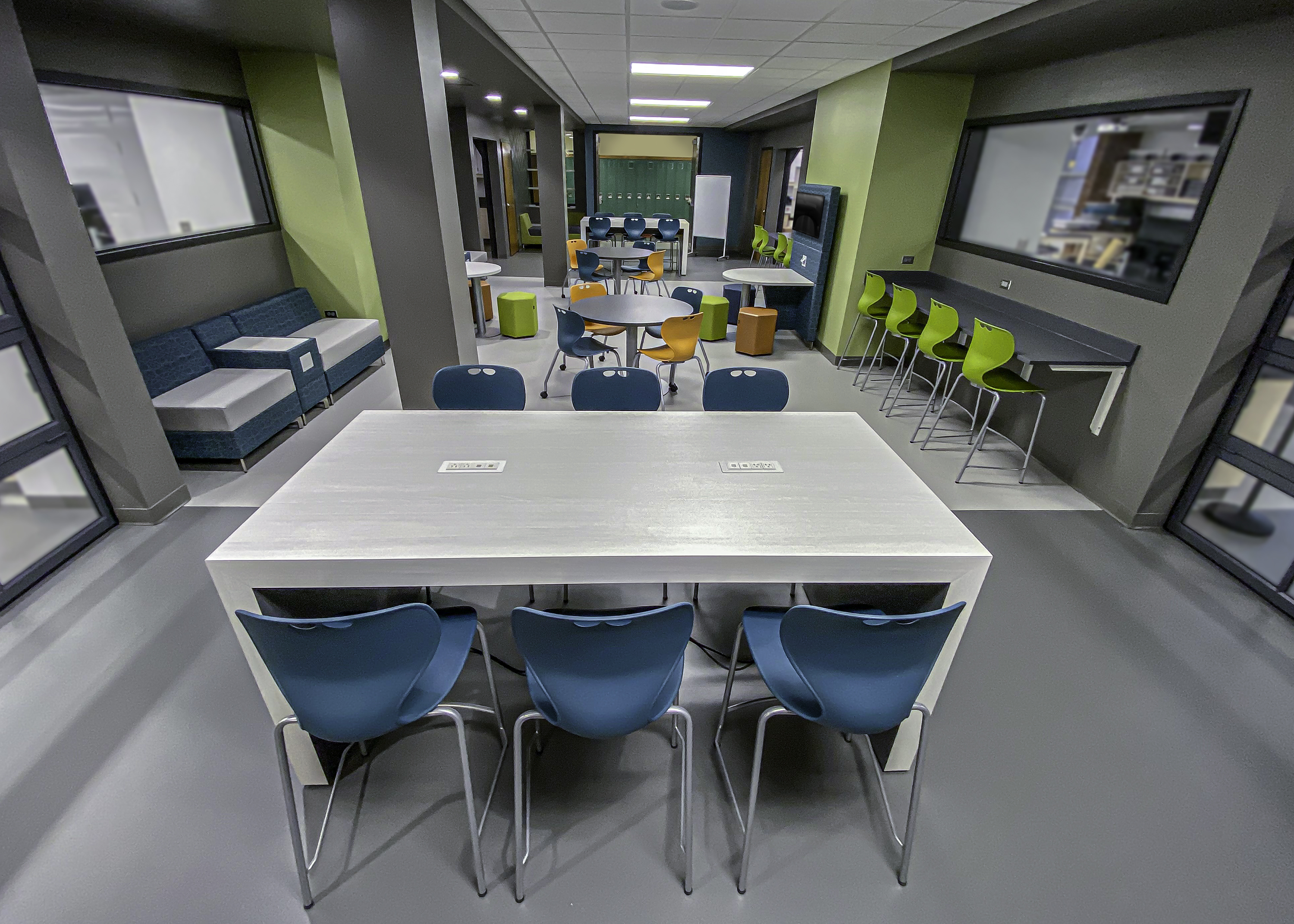How to Design “Future Ready” Science Labs
The new science labs at Deer Path Middle School in Illinois are tech-forward, bright, friendly, and comfortable spaces that emphasize student collaboration

The two science labs at Deer Path Middle School in Lake Forest, Illinois, were 20 years old and starting to show age.
“They were beginning not to function,” says Renee Fitzsimmons, director of innovation at Lake Forest School District.
This was in 2018, and Fitzsimmons and her colleagues in the district were faced with a choice. “It's like in an old house. Do you just make the quick little repair or do you do a full makeover?” she says. “We decided to go with the full makeover.”
The science classrooms for grades 5 and 6 and grades 7 and 8 were renovated across the district, creating an entirely new lab suite that is “future ready.”
Gone are the old, stuffy, and institutional-looking labs of yesteryear, and now in place are bright new open spaces designed with collaboration and student-centered learning in mind. “We wanted a good ambiance to the space,” Fitzsimmons says. “We wanted things to be flexible because we wanted to be able to teach in a newer style of teaching, which is what we are calling ‘a future ready style of teaching.’ We wanted to be able to have kids do formal and traditional labs, but then also be able to go sit and work and brainstorm.”
To that end, the two labs are joined together by a sleek, lounglike space called the “Living Room.” Fitzsimmons worked with designers from the school furniture provider MiEN to come up with a space that fostered comfort and learning.
“It almost looks like a cafe,” Fitzsimmons says.“You've got high-top tables with high-top chairs, and a lot of windows and glass. You've got natural light coming in now to this inner lab space that before didn't get any, and movable chairs, movable tables, and comfortable couches. You've got soft lighting.”
Tools and ideas to transform education. Sign up below.

To foster student collaboration there are multiple whiteboard surfaces, and the whole suite is tech-friendly with TVs that are connected to Apple TV so students can sync their school-issued iPads and share their work in real time.
It’s all designed to provide the opportunity for kids to be able to show their thinking as they're talking, communicating and collaborating, Fitzsimmons says.
Each lab can be split in half with moveable walls, so up to four classes can be conducted at once.
The new spaces debuted at the start of this school year. The district is operating with 80 percent of students attending in-person classes, and they have embraced the new space even while adhering to the distancing requirements needed due to Covid.
“Kids love it,” Fitzsimmons says. “The positive responses have been overwhelming.”
Advice for Other Districts
Focus on the Learning to Come
“Don't just replace,” Fitzsimmons says. “Don't just look at what you have and buy newer examples of what you've got. Actually think about what is it that your students do on a daily basis, what are the outcomes you want, and how can you make it future ready. So design for the collaborative and creative learning model that we all should be using in our pedagogy and the different types of professional learning that we're giving to our teachers.”
Collaborate and Compare
Before choosing the design for the new labs, the Lake Forest team met with science teachers and students to hear what they were looking for in a space. They also visited innovative labs at other schools. Fitzsimmons urges others considering an upgrade to make their process collaborative as well.
“Work with your curriculum people so that you know what sorts of things are important with that professional learning so that you know what the district's goals are,” she says. “Make sure that it’s going to be a space that matches what you're doing in your curriculum and in your pedagogy.”
Erik Ofgang is a Tech & Learning contributor. A journalist, author and educator, his work has appeared in The New York Times, the Washington Post, the Smithsonian, The Atlantic, and Associated Press. He currently teaches at Western Connecticut State University’s MFA program. While a staff writer at Connecticut Magazine he won a Society of Professional Journalism Award for his education reporting. He is interested in how humans learn and how technology can make that more effective.

